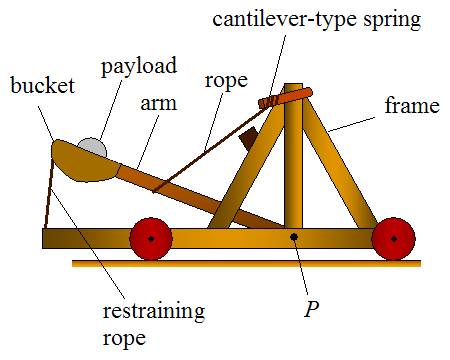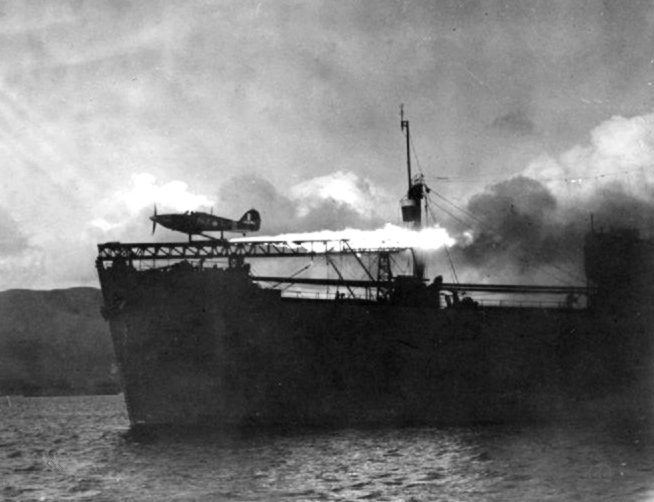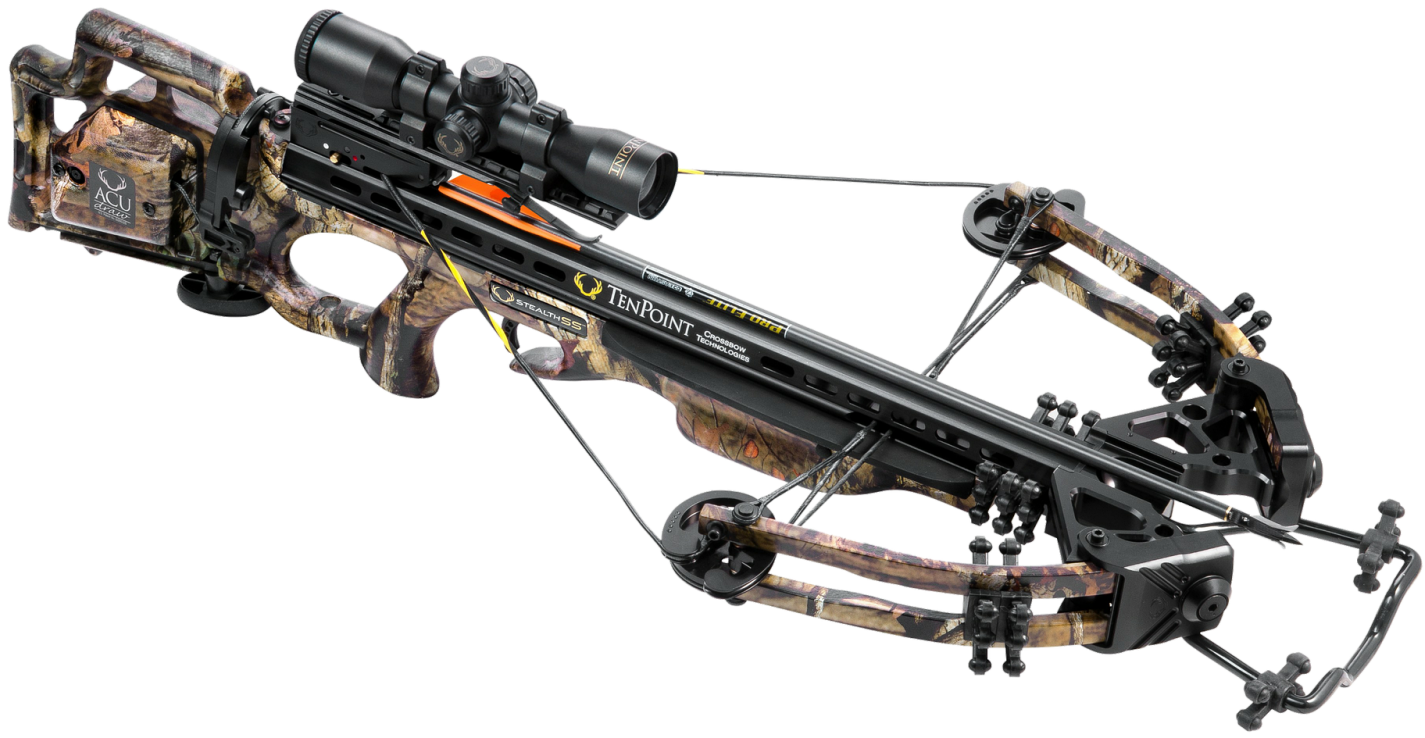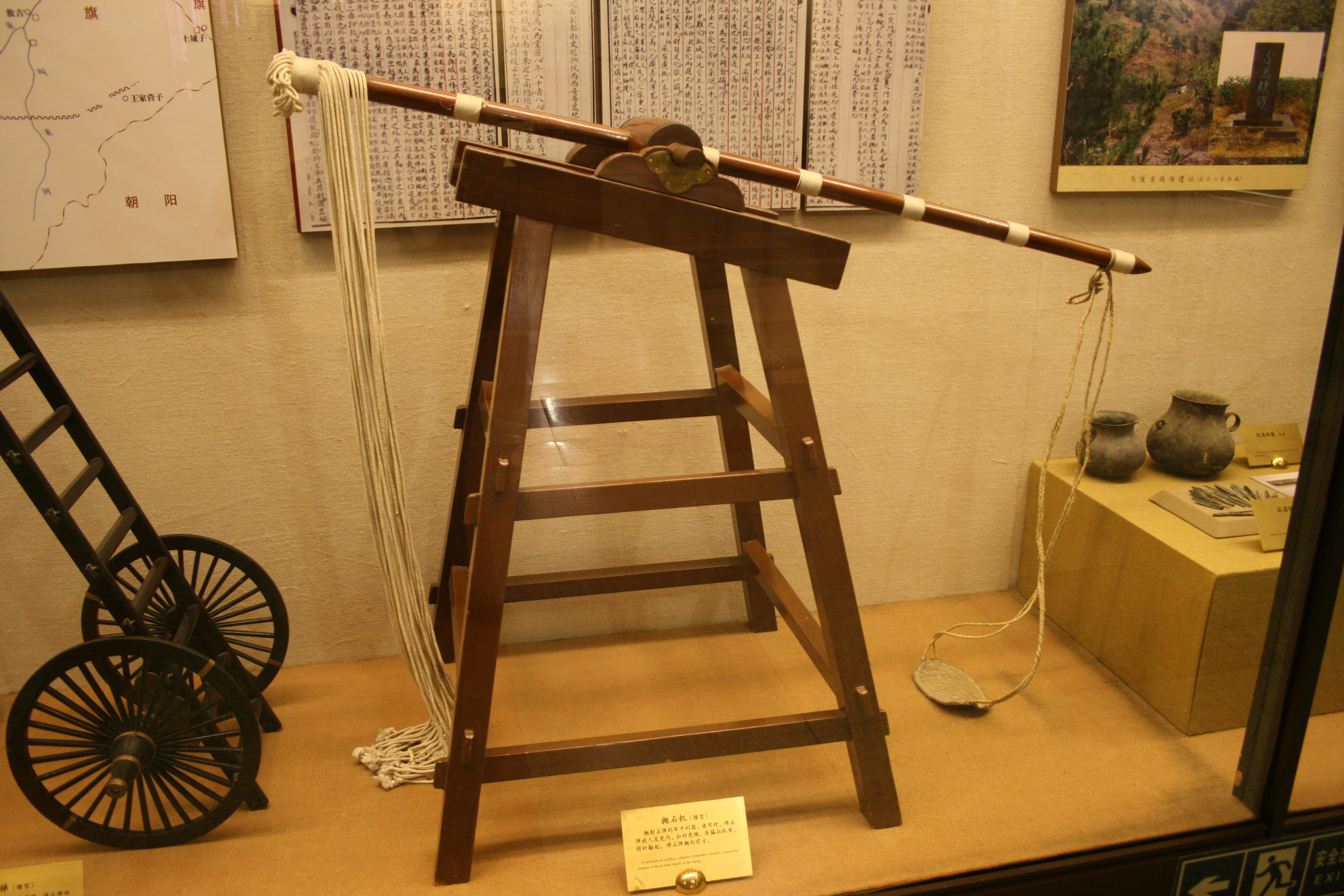|
Catapult
A catapult is a ballistics, ballistic device used to launch a projectile at a great distance without the aid of gunpowder or other propellants – particularly various types of ancient and medieval siege engines. A catapult uses the sudden release of stored potential energy to propel its payload. Most convert Tension (mechanics), tension or Torsion (mechanics), torsion energy that was more slowly and manually built up within the device before release, via springs, bows, twisted rope, elastic, or any of numerous other materials and mechanisms which allow the catapult to launch a projectile such as rocks, cannon balls, or debris. During wars in the ancient times, the catapult was usually known to be the strongest heavy weaponry. In modern times the term can apply to devices ranging from a simple hand-held implement (also called a "slingshot") to a mechanism for Aircraft catapult, launching aircraft from a ship. The earliest catapults date to at least the 7th century BC, with Kin ... [...More Info...] [...Related Items...] OR: [Wikipedia] [Google] [Baidu] |
Aircraft Catapult
An aircraft catapult is a device used to help fixed-wing aircraft gain enough airspeed and lift for takeoff from a limited distance, typically from the deck of a ship. They are usually used on aircraft carrier flight decks as a form of assisted takeoff, but can also be installed on land-based runways, although this is rare. The catapult used on aircraft carriers consists of a track or slot built into the flight deck, below which is a large piston or ''shuttle'' that is attached through the track to the nose gear of the aircraft, or in some cases a wire rope, called a catapult bridle, is attached to the aircraft and the catapult shuttle. Other forms have been used historically, such as mounting a launching cart holding a seaplane on a long girder-built structure mounted on the deck of a warship or merchant ship, but most catapults share a similar sliding track concept. Different means have been used to propel the catapult, such as weight and derrick, gunpowder, flywheel, co ... [...More Info...] [...Related Items...] OR: [Wikipedia] [Google] [Baidu] |
Ballistics
Ballistics is the field of mechanics concerned with the launching, flight behaviour and impact effects of projectiles, especially weapon munitions such as bullets, unguided bombs, rockets and the like; the science or art of designing and accelerating projectiles so as to achieve a desired performance. A ballistic body is a free-moving body with momentum, which can be subject to forces such as those exerted by pressurized gases from a gun barrel or a propelling nozzle, normal force by rifling, and gravity and air drag during flight. A ballistic missile is a missile that is missile guidance, guided only during the relatively brief initial phase of powered flight, with the trajectory subsequently governed by the laws of classical mechanics, in contrast to (for example) a cruise missile, which is aerodynamics, aerodynamically guided in powered flight like a fixed-wing aircraft. History and prehistory The earliest known ballistic projectiles were stones, spears, and the throwing s ... [...More Info...] [...Related Items...] OR: [Wikipedia] [Google] [Baidu] |
Crossbow
A crossbow is a ranged weapon using an Elasticity (physics), elastic launching device consisting of a Bow and arrow, bow-like assembly called a ''prod'', mounted horizontally on a main frame called a ''tiller'', which is hand-held in a similar fashion to the stock (firearms), stock of a long gun. Crossbows shoot arrow-like projectiles called ''crossbow bolt, bolts'' or ''quarrels''. A person who shoots crossbow is called a ''crossbowman'', an ''arbalister'' or an ''arbalist (crossbowman), arbalist'' (after the arbalest, a European crossbow variant used during the 12th century). Crossbows and bows use the same elastic launch principles, but differ in that an archer using a Bow and arrow, bow must draw-and-shoot in a quick and smooth motion with limited or no time for aiming, while a crossbow's design allows it to be spanned and cocked ready for use at a later time and thus affording them unlimited time to aim. When shooting bows, the archer must fully perform the bow draw, draw, h ... [...More Info...] [...Related Items...] OR: [Wikipedia] [Google] [Baidu] |
Trebuchet
A trebuchet () is a type of catapult that uses a hinged arm with a sling attached to the tip to launch a projectile. It was a common powerful siege engine until the advent of gunpowder. The design of a trebuchet allows it to launch projectiles of greater weights and further distances than a traditional catapult. There are two main types of trebuchet. The first is the ''traction trebuchet'', or mangonel, which uses manpower to swing the arm. It first appeared in China by the 4th century BC. It spread westward, possibly via the Avars, and was adopted by the Byzantines, Persians, Arabs, and other neighboring peoples by the sixth to seventh centuries AD. The later, and often larger and more powerful, counterweight trebuchet, also known as the counterpoise trebuchet, uses a counterweight to swing the arm. It appeared in both Christian and Muslim lands around the Mediterranean in the 12th century, and was carried back to China by the Mongols in the 13th century. "Although this is ... [...More Info...] [...Related Items...] OR: [Wikipedia] [Google] [Baidu] |
Mangonel
The mangonel, also called the traction trebuchet, was a type of trebuchet used in Ancient China starting from the Warring States period, and later across Eurasia by the 6th century AD. Unlike the later counterweight trebuchet, the mangonel was operated by people pulling ropes attached to one end of a lever, the other end of which had a sling to launch projectiles. Although the mangonel required more men to function, it was also less complex and faster to reload than the torsion-powered onager which it replaced in early Medieval Europe. It was replaced as the primary siege weapon in the 12th and 13th centuries by the counterweight trebuchet.Chevedden, Paul E.; et al. (July 1995). "The Trebuchet". Scientific American: 66–71. http://static.sewanee.edu/physics/PHYSICS103/trebuchet.pdf . Original version. A common misconception about the mangonel is that it was a torsion siege engine. Etymology The word ''mangonel'' was first attested in English in the 13th century, it is borr ... [...More Info...] [...Related Items...] OR: [Wikipedia] [Google] [Baidu] |
Siege Engine
A siege engine is a device that is designed to break or circumvent heavy castle doors, thick city walls and other fortifications in siege warfare. Some are immobile, constructed in place to attack enemy fortifications from a distance, while others have wheels to enable advancing up to the enemy fortification. There are many distinct types, such as siege towers that allow foot soldiers to scale walls and attack the defenders, battering rams that damage walls or gates, and large ranged weapons (such as ballistas, catapults/ trebuchets and other similar constructions) that attack from a distance by launching heavy projectiles. Some complex siege engines were combinations of these types. Siege engines are fairly large constructions – from the size of a small house to a large building. From antiquity up to the development of gunpowder, they were made largely of wood, using rope or leather to help bind them, possibly with a few pieces of metal at key stress points. They could la ... [...More Info...] [...Related Items...] OR: [Wikipedia] [Google] [Baidu] |
Slingshot
A slingshot or catapult is a small hand-powered projectile weapon. The classic form consists of a Y-shaped frame, with two tubes or strips made from either a natural rubber or synthetic elastic material. These are attached to the upper two ends. The other ends of the strips lead back to a pouch that holds the projectile. One hand holds the frame, while the other hand grasps the pocket and draws it back to the desired extent to provide power for the projectile—up to a full span of the arms with sufficiently long bands. Other names include catapult (United Kingdom), peashooter (United States), gulel (India), (South Africa), or ging, shanghai, pachoonga (Australia and New Zealand) Use and history Slingshots depend on strong Elasticity (physics), elastic materials for their projectile firepower, typically vulcanization, vulcanized natural rubber or the equivalent such as silicone rubber tubing, and thus date no earlier than the invention of vulcanized rubber by Charles Goodyear ... [...More Info...] [...Related Items...] OR: [Wikipedia] [Google] [Baidu] |
Haryanka Dynasty
The Haryanka dynasty was the ruling dynasty of Magadha, according to the Buddhist text Mahavamsa between 544 BC and 413 BC though some scholars favour a later chronology (5th century BCE to first half of 4th century BCE). Initially, the capital was Rajagriha. Later, it was shifted to Pataliputra, near present-day Patna in India during the reign of Udayin. Bimbisara is considered to be the founder of the dynasty. According to the Mahavamsa, Bimbisara was appointed king by his father, Bhattiya, at the age of fifteen. This dynasty was succeeded by the Shaishunaga dynasty. Governance The governance structure of Haryanka dynasty is mentioned in ancient texts. They mention ''gramakas'' (village headmen) who headed village assemblies and ''mahamatras'' (high-ranking officials) who had executive, judicial and military functions. Historically, this period coincided with the Achaemenid conquest of the Indus Valley during the rule of Darius I from about 517/516 BCE. Rulers Bimb ... [...More Info...] [...Related Items...] OR: [Wikipedia] [Google] [Baidu] |
Ancient India
Anatomically modern humans first arrived on the Indian subcontinent between 73,000 and 55,000 years ago. The earliest known human remains in South Asia date to 30,000 years ago. Sedentism, Sedentariness began in South Asia around 7000 BCE; by 4500 BCE, settled life had spread, and gradually evolved into the Indus Valley Civilisation, one of three early Cradle of civilization, cradles of civilisation in the Old World, which flourished between 2500 BCE and 1900 BCE in present-day Pakistan and north-western India. Early in the second millennium BCE, 4.2 kiloyear event, persistent drought caused the population of the Indus Valley to scatter from large urban centres to villages. Rigvedic tribes, Indo-Aryan tribes moved into the Punjab from Central Asia in several Indo-Aryan migration theory, waves of migration. The Vedic Period of the Vedic people in northern India (1500–500 BCE) was marked by the composition of their extensive collections of hymns (Vedas). The social structure ... [...More Info...] [...Related Items...] OR: [Wikipedia] [Google] [Baidu] |
Licchavi (kingdom)
The Licchavis of Nepal (, also ''Lichchhavi'', ''Lichavi'') ruled over a kingdom in the Kathmandu Valley of Nepal from approximately 450 to 750 CE. The Licchavi clan originated from a branch of the Licchavis of Vaishali who ruled in the territory of modern-day Bihar and who later conquered the Kathmandu Valley. The Licchavis were ruled by a ''maharaja'', aided by a prime minister and other royal officials, but in practice local communities were controlled by caste councils. The ruling period of this dynasty was called the Golden Period of Nepal. A table of the evolution of certain Gupta characters used in Licchavi inscriptions prepared by Gautamavajra Vajrācārya can be found online. Records It is believed that a branch of the Licchavi clan, having lost their political fortune and military power in Vaishali (Bihar), came to Kathmandu and intermarried with the family of the ruling Queen, Mandeva Shree Vogini of the Nagvanshi clan, thus beginning their rule in NepalSourc ... [...More Info...] [...Related Items...] OR: [Wikipedia] [Google] [Baidu] |
Hero Of Alexandria, Belopoiika, Paris, Graec
A hero (feminine: heroine) is a real person or fictional character who, in the face of danger, combats adversity through feats of ingenuity, courage, or strength. The original hero type of classical epics did such things for the sake of glory and honor. Post-classical and modern heroes, on the other hand, perform great deeds or selfless acts for the common good instead of the classical goal of wealth, pride, and fame. The antonym of ''hero'' is ''villain''. Other terms associated with the concept of ''hero'' may include ''good guy'' or '' white hat''. In classical literature, the hero is the main or revered character in heroic epic poetry celebrated through ancient legends of a people, often striving for military conquest and living by a continually flawed personal honor code. The definition of a hero has changed throughout time. Merriam Webster dictionary defines a hero as "a person who is admired for great or brave acts or fine qualities". Examples of heroes range fr ... [...More Info...] [...Related Items...] OR: [Wikipedia] [Google] [Baidu] |
Ancient Greeks
Ancient Greece () was a northeastern Mediterranean civilization, existing from the Greek Dark Ages of the 12th–9th centuries BC to the end of classical antiquity (), that comprised a loose collection of culturally and linguistically related city-states and communities. Prior to the Roman period, most of these regions were officially unified only once under the Kingdom of Macedon from 338 to 323 BC. In Western history, the era of classical antiquity was immediately followed by the Early Middle Ages and the Byzantine period. Three centuries after the decline of Mycenaean Greece during the Bronze Age collapse, Greek urban poleis began to form in the 8th century BC, ushering in the Archaic period and the colonization of the Mediterranean Basin. This was followed by the age of Classical Greece, from the Greco-Persian Wars to the death of Alexander the Great in 323 BC, and which included the Golden Age of Athens and the Peloponnesian War. The unificati ... [...More Info...] [...Related Items...] OR: [Wikipedia] [Google] [Baidu] |











